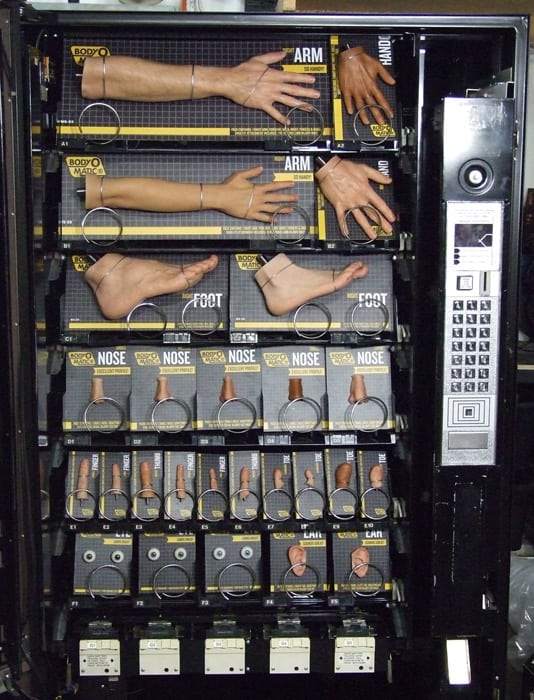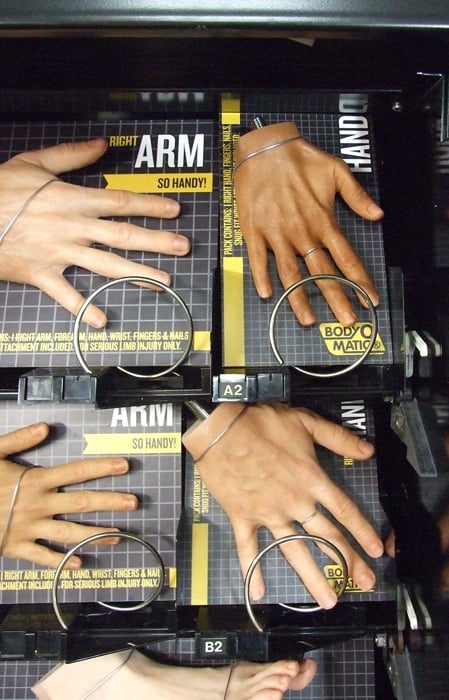At the moment Australian OHS professionals, lawyers and businesses are preparing submissions to the Government on the harmonisation of OHS laws. One of the areas that the Government is seeking advice on is penalties. The Discussion Paper asks the following
Q17. Are the range and levels of penalties proposed above appropriate, taking account of the levels set for breaches of duties of care by the WRMC?
Q18. What should the maximum penalty be for a contravention of the model regulations?
Q19. The intention is that all contraventions of the model Act be criminal offences. Is this appropriate or should some non-duty of care offences be subject to civil sanctions e.g. failure to display a list of HSRs at the workplace, offences relating to right of entry?
The amount of any fixed financial penalty is not a big issue in my opinion. There is an assumption that the threat of a large financial penalty imposed on one company will encourage other companies to improve safety. Is anyone seriously saying that all of the financial penalties imposed over the decades are in some way responsible for an improving level of safety in workplaces? The motivation to improve safety comes from elsewhere.
The threat of large financial penalties send companies to seek ways of insuring against having to pay a fine. Often it is cheaper to pay an insurance premium on the slim chance of being prosecuted and fined. I acknowledge that this has been a corporate and risk management approach primarily but there are cases where such options are being offered to small business.
Large financial penalties, such as the then record fine to Esso over its Longford gas explosion, are easily paid with little OHS improvement resulting from the fine. It can be argued that the negative corporate exposure from the resulting Royal Commission, a reulting class action and the media coverage resulting from its unforgivable treatment of Jim Ward were stronger motivators for improvement.
In most Australian States, there is not a crime of industrial manslaughter. This issue has faded from the political agenda but it remains very much alive in England. On 27 October 2009, the Sentencing Guidelines Council wrote the following:
“Companies and organisations that cause death through gross breaches of care should face punitive and significant fines, a consultation guideline published by the Sentencing Guidelines Council proposes today.
Fines for organisations found guilty of the new offence of corporate manslaughter may be measured in millions of pounds and should seldom be below £500,000.
The new sanction of Publicity Orders forcing companies and organisations to make a statement about their conviction and fine introduced under the Corporate Manslaughter and Corporate Homicide Act should be imposed in virtually all cases.
The consultation guideline proposes that the publicity should be designed to ensure that the conviction becomes known to shareholders and customers in the case of companies and to local people in the case of public bodies, such as local authorities, hospital trusts and police forces. Organisations may be made to put a statement on their websites.”
The Council recommends a minimum financial penalty and a publicity order that has teeth. More on the publicity order is below.
Council member Lord Justice Anthony Hughes clearly states the purpose of financial penalties and it is not preventative. He said in a media statement
“Fines cannot and do not attempt to value a human life – compensation will be payable separately in these cases. The fine is designed to punish and these are serious offences so the fines imposed should be punitive and significant to reflect that.”
Penalties as a Percentage of Turnover
Hughes says that the Council rejected a Sentencing Advisory Panel proposal that I believe should be floated in the current debate on penalties in Australia, even though it is likely to be similarly rejected.
The Panel recommended the following
“In order to achieve an equal economic impact on offending organisations of different sizes, the proposed starting points and ranges for offences of corporate manslaughter are expressed as percentages of the offending organisation’s average annual turnover during the three years prior to sentencing. The relevant turnover is that of the company convicted of the offence or, where the offending organisation is a holding company, the consolidated turnover of the group of companies of which it is the holding company.”
Here is the penalty table

Lawyers argue extensively about the use of manslaughter in relation to deaths in workplace but the public jumps across the legalese by repeatedly asking how the death of their loved one is not manslaughter when the actions of a director or company led directly to the death? No level of legal explanation is going to counter this need for accountability, some would say revenge.
Similarly the penalty rate listed in the table above is easier for the public to understand conceptually compared to a judge’s or lawyer’s explanation of why a financial penalty for a workplace death was less than the maximum.
Sentencing options are complex and SafetyAtWorkBlog has no legal contributors but on 30 October 2009 within a public discussion period on national OHS laws and at the end of Safe Work Australia Week, it seem thats penalties imposed from a percentage of turnover may be an attractive concept to many safety advocates and one that needs to be considered in the Australian context.
Publicity Orders
On the issue of publicity orders, many Australian jurisdictions have had this option for a while. Indeed, the issue of enforceable undertakings is getting a broader hearing after some of the recent actions by Comcare against John Holland Group and others.
It is always important to look at the most recent actions and decisions in OHS law and regulation from outside one’s own jurisdiction so that innovations are not overlooked. It seems that the Sentencing Advisory Panel has looked at lots of jurisdictions in making the following requirements.
The Sentencing Advisory Panel listed specific requirements of a publicity order to be applied within a specified timeframe:
- a quarter-page advertisement in a local or regional newspaper, in the case of an organisation operating in one area; or
- an eighth-page advertisement in three specified national daily newspapers, in the case of an organisation operating nationally; and
- an eighth-page notice in a relevant trade publication; and
- a prominent notice in the organisation’s annual report (also in electronic format where applicable); and
- where applicable, a notice on the homepage of the organisation’s website for a minimum period of three months.
The panel also closed a possible (out) for offending companies.
” The making of a publicity order does not justify a reduction in the level of fine imposed on an organisation for an offence of corporate manslaughter.”
The ads on home pages, local newspapers and trade publications (if there are any) seems very reasonable but the media option that may be most influential is the inclusion in the company’s annual report. Acknowledging a workplace death and expressing regret in an annual report is admirable but “a prominent notice in the organisation’s annual report” goes straight to the shareholders who often have the ear of the corporation. Just look at the influence being applied by them at the moment on executive salaries.
Now is the right time for Australia to consider alternative OHS penalty options.



![Media -0x1.8b5ce0p-63lert- 52392336nal[1] - crime Media -0x1.8b5ce0p-63lert- 52392336nal[1] - crime](http://safetyatworkblog.files.wordpress.com/2009/06/media-0x1-8b5ce0p-63lert-52392336nal1-crime.jpg?w=191)

